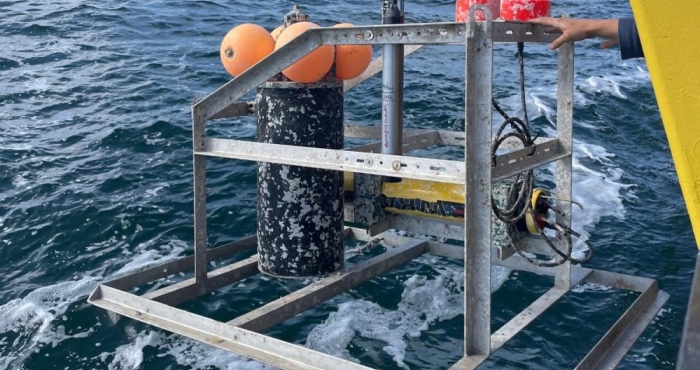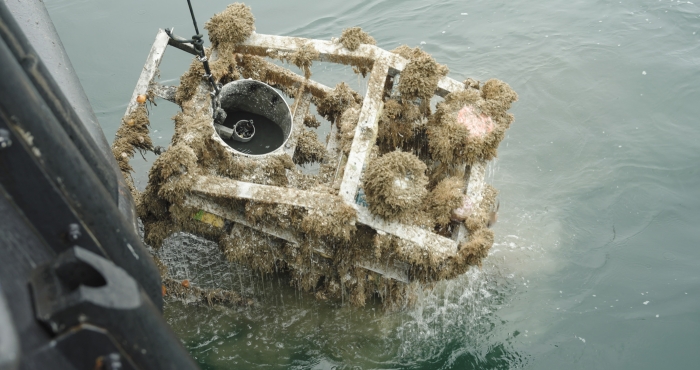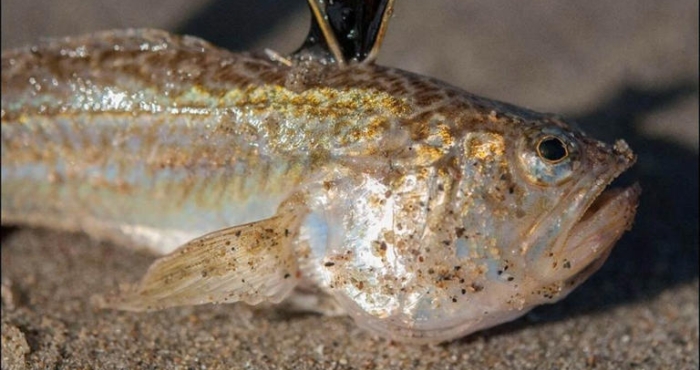


From Europe to the Atlantic: new insights into eel migration
European eels are legendary travelers, undertaking journeys of up to 9,000 km to spawn inthe Atlantic Ocean. A groundbreaking study led by LifeWatch researchers has broughttogether tracking data from more than 2,300 eels across 9 countries, revealing howgeography and river barriers shape the timing of this epic migration.
SoundLib: The Marine Sound Library for the Belgian Part of the North Sea
VLIZ has launched the Marine Sound Library (SoundLib), a unique open database of underwater sounds from the North Sea. With thousands of recordings and advanced analysis tools, the platform provides new insights into the region’s acoustic environment. SoundLib supports scientists, policymakers, and the public in understanding how natural and human-made sounds affect marine ecosystems, and creates new opportunities for AI-driven research.
Waves of Resonance: An artistic journey with LifeWatch Belgium’s ocean data
Waves of Resonance is a sound project by artist Elise Guillaume, initiated during the European Marine Board’s EMBracing the Ocean artist-in-residence programme under the UN Decade of Ocean Science for Sustainable Development. She collaborated with Clea Parcerisas (LifeWatch Belgium) and Marine Severin (VLIZ) to explore the psychological impact of marine sounds. LifeWatch Belgium played a key role by providing unique underwater sound data from its observatory in the Belgian part of the North Sea.NELOS divers use WoRMS in digital dive log: a step toward citizen science
The Flemish diving federation NELOS vzw (Dutch-speaking League for Underwater Research and Sports) has recently integrated the World Register of Marine Species (WoRMS) into its internal platform DIVES — a Digital Verification System used to log tens of thousands of dives each year.
Sevenfold increase in stinging weever fish observed by SeaWatch-B
Between April and late June this year, weever fish counts were seven times higher than during the same period in 2024, according to SeaWatch-B, the citizen science project of the Flanders Marine Institute (VLIZ) under the LifeWatch Belgium Programme.
Noise pollution in the North Sea
The North Sea is one of the busiest seas in the world. All this human activity creates a lot of noise underwater. This can have harmful consequences for marine mammals and other organisms in our sea. Fortunately, measures exist to limit noise pollution. The Marine Environment Service (FOD Public Health) and DG Shipping (FOD Mobility), with the support of LifeWatch VLIZ, collaborated on a campaign to raise awareness about underwater noise pollution among the wider public.Old cockles and record number of shells at the eighth edition of the Big Seashell Survey
The eighth edition of the Big Seashell Survey was a record-breaking event. No fewer than 3,500 participants scoured 400 km of coastline in northern France, Belgium, and the Netherlands, collecting and identifying nearly 150,000 shells from 72 different species. This year, the differences between the three countries were less pronounced, with the cut trough shell ranking as the most frequently found species across all regions. The Atlantic jackknife clam, the banded wedge shell, and the common cockle consistently appeared in the top five. A one-time focus on the cockle in Belgium revealed that most of these shells originated in a distant past, with only a handful of live populations remaining in the shallow continental North Sea.Return of the twaite shad to the Scheldt River After a Century-Long Absence
The twaite shad, a migratory fish that once disappeared from the Scheldt River due to pollution, has made a remarkable return in the past decade. Known locally as the “May fish,” the twaite shadspawns in the river between late April and early May. Researchers from the Institute for Nature and Forest Research (INBO) have been studying the species since its return in 2014, using LifeWatch Belgium acoustic telemetry and data loggers to track the fish’s movements and habits.New Study Monitors Fish Migration in the Leie and Scheldt Rivers
Over recent weeks, researchers from the Institute for Nature and Forest Research (INBO) have deployed an extensive network of detection devices alo